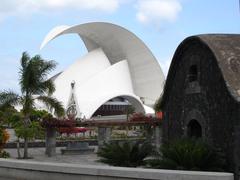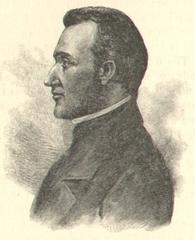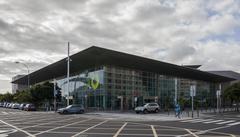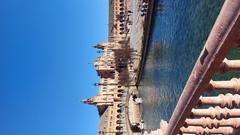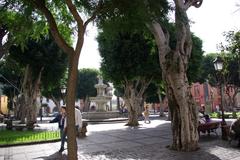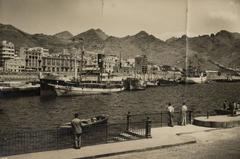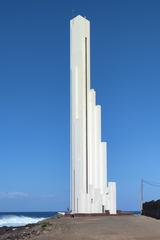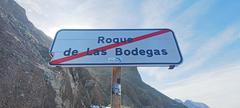Visiting the Museum of Science and the Cosmos in Santa Cruz de Tenerife
Date: 17/08/2024
Introduction
The Museum of Science and the Cosmos in Santa Cruz de Tenerife, Spain, is a captivating destination for science enthusiasts, families, and tourists alike. Opened on May 11, 1993, through the collaborative efforts of the Instituto de Astrofísica de Canarias (IAC) and the Cabildo de Tenerife, the museum has become a significant educational and cultural hub in the Canary Islands (KidPassage). Designed by architects Jordi Garcés and Enric Sòria, with museographic input from Enric Franch, its half-star-shaped structure symbolizes its focus on astronomy and reflects its deep ties with the astrophysical community. Over the years, the museum has expanded its scope to include various scientific disciplines, making science accessible and engaging for visitors of all ages through interactive displays and multimedia tools (Barceló). This comprehensive guide will provide detailed visitor information, highlight notable exhibits, explore community engagement efforts, and offer practical travel tips to ensure a memorable visit.
Table of Contents
- Introduction
- History and Significance
- Visitor Information
- Notable Exhibits and Features
- Community Engagement and Public Outreach
- Special Events and Guided Tours
- Nearby Attractions and Travel Tips
- FAQ
- References
History and Significance
Inception and Early Years
The Museum of Science and the Cosmos was inaugurated on May 11, 1993, thanks to a collaborative effort between the Instituto de Astrofísica de Canarias (IAC) and the Cabildo de Tenerife. Led by Ignacio García de la Rosa from the IAC, the museum’s opening featured Russian cosmonaut Sergei Krikalev, emphasizing its focus on space and astronomy.
Architectural Design
Designed by architects Jordi Garcés and Enric Sòria, with museographic input from Enric Franch, the museum’s half-star-shaped structure symbolizes its astronomical focus. Strategically located next to the IAC in La Laguna, the museum underscores its close ties with the astrophysical community.
Evolution and Expansion
Since its inception, the museum has evolved to include a wide range of scientific disciplines beyond astronomy, such as physics, biology, and technology. Its philosophy is to make science accessible and engaging for all ages through interactive displays and multimedia tools.
Visitor Information
Tickets and Visiting Hours
The museum welcomes visitors throughout the week. Here are the general details:
- Visiting Hours: Tuesday to Saturday, 9:00 AM - 8:00 PM; Sundays, Mondays, and holidays, 10:00 AM - 5:00 PM
- Ticket Prices: Adults - €5; Children (6-12) - €3; Free entry for children under 6 and IAC members
- Online Booking: Tickets can be purchased online via the official website.
Accessibility
The museum is committed to being accessible to all visitors, including those with disabilities. It features ramps, lifts, and adapted toilets. However, there may be slight difficulties accessing the outer square of the building.
Notable Exhibits and Features
The museum’s permanent exhibition covers various scientific topics, with a particular emphasis on astronomy. Key exhibits include models of telescopes and observatories, explorations of Earth’s rotation, solar activity, and orbits around black holes, as well as general science topics like the principles of a lever and the workings of a mobile phone.
Community Engagement and Public Outreach
The museum hosts regular talks, film debates, and stargazing nights, fostering a dialogue between scientists and the community. This outreach is part of the museum’s broader mission to make science accessible and engaging for everyone.
Special Events and Guided Tours
The museum offers guided tours and hosts special events throughout the year. These include temporary exhibitions, planetarium sessions, informative talks, educational workshops, and astronomy camps. The planetarium, equipped with a GOTO GE II projection system and a Digistar 5 digital projection system, is a major attraction.
Nearby Attractions and Travel Tips
Located in La Laguna, the museum is near several historical sites and attractions. Visitors can explore the historic town center, a UNESCO World Heritage site, or visit the nearby Teide National Park. For convenience, consider using public transportation or nearby parking facilities.
FAQ
What are the visiting hours for the Museum of Science and the Cosmos?
- Tuesday to Saturday: 9:00 AM - 8:00 PM
- Sundays, Mondays, and holidays: 10:00 AM - 5:00 PM
How much are tickets to the Museum of Science and the Cosmos?
- Adults: €5
- Children (6-12): €3
- Free entry for children under 6 and IAC members
Is the Museum of Science and the Cosmos accessible to visitors with disabilities?
- Yes, the museum is designed to be accessible to all visitors, including those with disabilities. The interior features ramps, lifts, and adapted toilets. However, there may be some difficulty accessing the outer square of the building.
What types of exhibitions can I expect to see at the Museum of Science and the Cosmos?
- The museum offers permanent exhibitions focused on astronomy, human biology, and general science, as well as temporary exhibitions that cover a wide range of scientific topics.
Are there any special programs or workshops for children?
- Yes, the museum offers educational workshops and camps, particularly during school holidays, which combine learning with play under the supervision of specialized monitors.
Conclusion
In conclusion, the Museum of Science and the Cosmos stands out as a premier destination for those interested in the wonders of science and astronomy. Its rich history, innovative exhibits, and commitment to accessibility make it an essential stop for anyone visiting Tenerife. With a range of permanent and temporary exhibitions, interactive displays, and a state-of-the-art planetarium, the museum offers an enriching experience for visitors of all ages. The museum’s educational workshops, community outreach programs, and special events further enhance its mission to make science engaging and accessible. Located in the historic city of La Laguna, the museum is conveniently situated near other cultural and historical attractions, providing a well-rounded experience for tourists (VisitCanaryIslands). Plan your visit today to explore the marvels of the cosmos and deepen your understanding of the scientific world.
References
- KidPassage. (n.d.). Museum of Science and the Cosmos. Retrieved from https://kidpassage.com/en/activity/spain/tenerife/museum-of-science-cosmos.
- Barceló. (n.d.). Museum of Science and the Cosmos. Retrieved from https://www.barcelo.com/guia-turismo/en/spain/tenerife/things-to-do/museum-of-science-and-the-cosmos/.
- VisitCanaryIslands. (n.d.). Science and Cosmos Museum. Retrieved from https://www.visitcanaryislands.org/science-and-cosmos-museum.
- Wikipedia. (n.d.). Museum of Science and the Cosmos. Retrieved from https://en.wikipedia.org/wiki/Museum_of_Science_and_the_Cosmos.
- Guide to Canary Islands. (n.d.). Things to do in San Cristóbal de La Laguna. Retrieved from https://www.guidetocanaryislands.com/things-to-do-san-cristobal-de-la-laguna/.
- UseBounce. (n.d.). Best Museums in Tenerife. Retrieved from https://usebounce.com/guides/tenerife/best-museums-in-tenerife.
- WhichMuseum. (n.d.). Museum of Science and the Cosmos. Retrieved from https://whichmuseum.com/museum/museum-of-science-and-the-cosmos-san-cristobal-de-la-laguna-31130.
- A to Z Tenerife. (n.d.). Museum of Science and the Cosmos. Retrieved from https://atoztenerife.com/museum-of-science-and-the-cosmos/.
